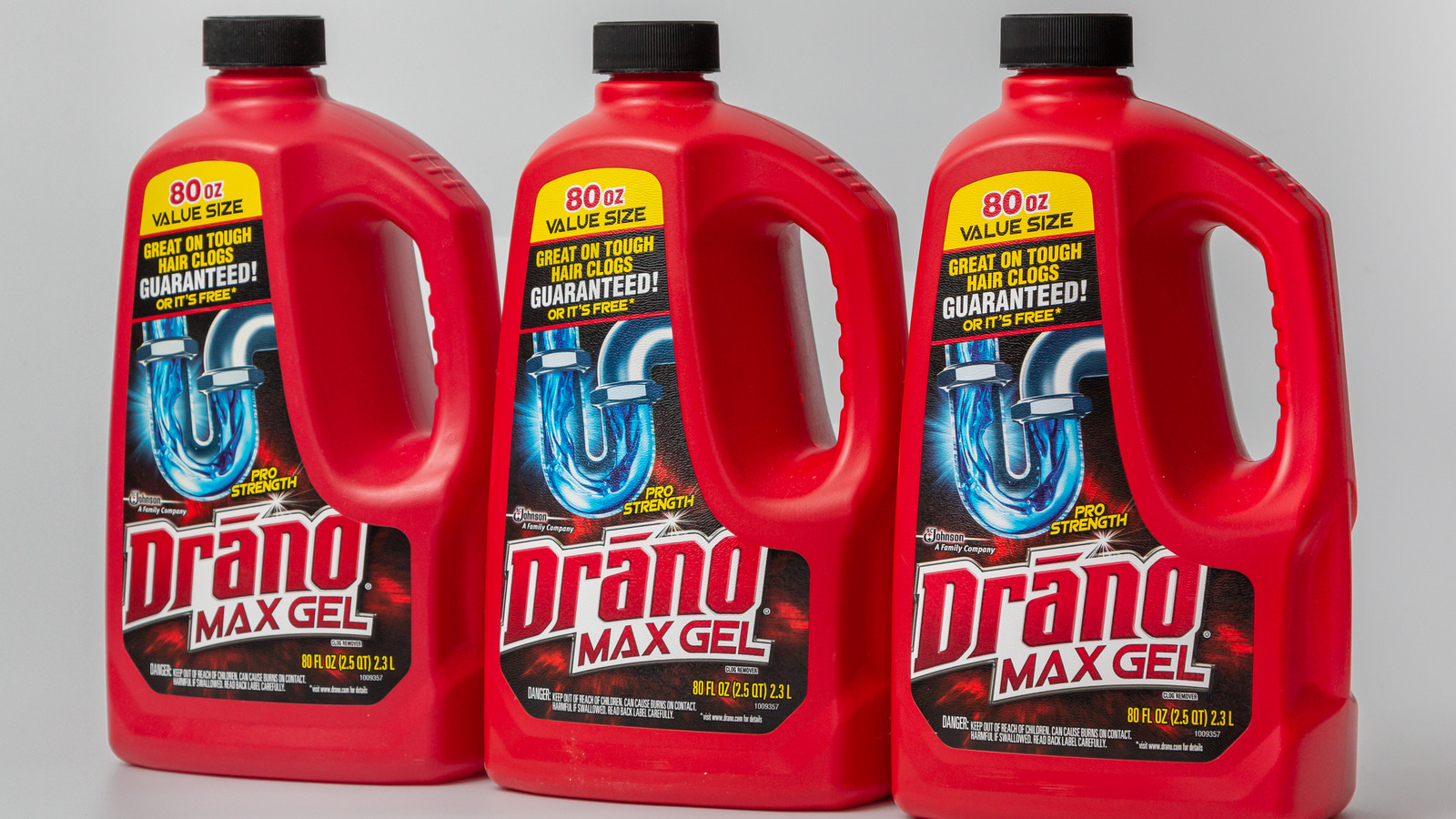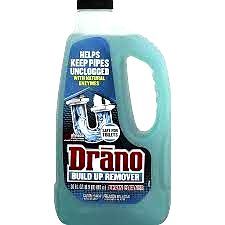Imagine this: You walk into your bathroom, ready to start your day, and are greeted by a stubbornly clogged toilet. Panic sets in as you wonder how to tackle the mess.
Should you reach for that bottle of Drano under the sink? Before you pour it in, it’s crucial to know whether Drano is safe for your toilet or if it could make things worse. This article will unravel the mystery surrounding Drano and toilets, helping you make informed decisions and avoid costly plumbing mistakes.
Stay with us, because understanding this common household dilemma could save you time, money, and a whole lot of hassle.

Credit: www.youtube.com
Drano And Toilet Use
Have you ever faced a stubborn clog in your toilet and wondered if Drano could be the quick fix you need? While Drano is a popular go-to for sink and shower blockages, using it in your toilet might not be the best idea. Let’s dive into the reasons why Drano isn’t ideal for toilets and explore safer alternatives for dealing with pesky clogs.
Chemical Composition And Toilet Safety
Drano contains chemicals like sodium hydroxide, which are effective in breaking down clogs in pipes. However, your toilet’s plumbing is different from sinks and showers. The harsh chemicals can damage the toilet’s porcelain and pipes, leading to costly repairs. Imagine flushing, only to find your toilet in worse condition than before!
Risks Of Using Drano In Toilets
Using Drano in toilets can cause more harm than good. The chemical reaction might generate heat, which could crack the toilet bowl. Additionally, Drano can create toxic fumes when mixed with other cleaning agents. Protect your health and home by choosing safer methods for unclogging toilets.
Alternatives To Drano For Unclogging Toilets
Wondering what you can use instead of Drano? A plunger is your best friend for toilet clogs. It’s simple, effective, and doesn’t involve any chemicals. For tougher clogs, a toilet auger can reach deeper blockages that a plunger might miss. These tools are readily available and easy to use.
When To Call A Professional
If your toilet remains clogged despite your efforts, it might be time to call a plumber. Persistent blockages could indicate underlying issues that require expert attention. A professional can diagnose the problem and ensure your plumbing is in top shape. Would you rather risk damage or have peace of mind?
Next time your toilet gets clogged, remember that Drano isn’t the solution. Choose safer alternatives and keep your plumbing intact. Have you ever tried using Drano in your toilet? How did it go? Share your experiences and tips in the comments below!

Credit: gopaschal.com
Chemical Composition Of Drano
Drano is a well-known household name when it comes to clearing clogged drains. But what exactly is Drano made of? Understanding the chemical composition of Drano can help you decide whether it’s safe to use in your toilet. Let’s dive into the ingredients that make up this powerful cleaning solution.
What Ingredients Make Up Drano?
Drano’s formula is a blend of several key chemicals. The most prominent ingredients are sodium hydroxide and sodium hypochlorite. These compounds are effective in breaking down organic matter. They attack the clogs and help clear them away.
Another component is aluminum. When combined with sodium hydroxide, it produces hydrogen gas. This reaction is what causes the bubbling action that helps dislodge blockages.
Drano also includes surfactants. These are substances that reduce surface tension. They help the solution penetrate deeper into the clog, ensuring a more thorough clean.
How Do These Chemicals Work?
Each ingredient in Drano has a specific role. Sodium hydroxide, a strong base, breaks down grease and fat. It’s like a super-powered soap that tackles stubborn residues.
Sodium hypochlorite acts as a disinfectant. It not only helps clear the clog but also kills bacteria. This keeps your drains not just clean but also hygienic.
The aluminum creates a fizzing action. This physical reaction helps to physically push the clog apart, making it easier for the other chemicals to do their job.
Is It Safe For Toilets?
Here’s where things get tricky. Drano is designed for sink and shower drains. Its aggressive formula can damage toilet pipes. The chemicals may corrode the toilet’s plumbing system.
Have you ever faced the frustration of a clogged toilet and wondered if Drano could be a quick fix? It’s tempting, but consider the potential damage. Your toilet’s pipes are not built to withstand such harsh chemicals.
If your toilet is clogged, try using a plunger or a snake first. These tools are designed specifically for toilets and are safe to use. Ask yourself: Is the short-term convenience worth the potential long-term cost?
What Are The Alternatives?
You don’t need to rely on Drano for a clean toilet. Look for toilet-specific cleaners. These products are formulated to be safe for plumbing systems.
Consider natural methods. Baking soda and vinegar can be effective. These ingredients react to form a mild fizz that might just do the trick.
Reach for a plunger before chemicals. It’s a simple tool that can save you from costly repairs. And always keep a toilet snake handy for those stubborn clogs.
In the end, understanding what Drano is made of can help you make informed decisions. The right choice can save you time, money, and a lot of hassle.
Potential Risks
Using Drano in a toilet can damage pipes and plumbing. It may cause harmful chemical reactions. Consider safer alternatives to unclog toilets.
If you’ve ever faced a clogged toilet, you might have considered reaching for a bottle of Drano. However, it’s crucial to understand the potential risks involved. Using Drano in a toilet can lead to various issues, some of which can be harmful to both your plumbing and the environment. Let’s delve into these risks and explore why it might not be the best solution for your toilet troubles.Pipe Damage
Drano is designed for sinks, not toilets. Its powerful chemicals can generate heat as they react. This heat can cause PVC pipes to warp or even crack over time. Metal pipes aren’t safe either. The corrosive nature of Drano can eat away at metal, leading to leaks. Have you ever considered the cost of replacing damaged pipes? It’s a hefty price for a quick fix.Harmful Fumes
Have you ever noticed the fumes when using chemical cleaners? Drano is no exception. Its fumes can be harmful if inhaled, especially in a small, enclosed bathroom. Opening a window might not always be enough. Prolonged exposure can irritate your eyes, nose, and throat. Imagine dealing with a headache on top of a clogged toilet.Environmental Impact
Drano’s impact extends beyond your home. The chemicals can end up in waterways, affecting aquatic life. Think about the fish and plants that rely on clean water. Are they worth sacrificing for a temporary fix to your plumbing problem? Opting for eco-friendly solutions not only protects your pipes but also our planet. Wouldn’t you rather be part of the solution than the problem? When faced with a clogged toilet, consider these potential risks before reaching for Drano. There are safer alternatives that can save your pipes, your health, and the environment. Have you thought about trying a plunger or a plumber’s snake instead?
Credit: www.drainbrainllc.com
Alternative Solutions
Drano is not safe for toilets due to potential pipe damage. Explore safer alternatives like a plunger or plumbing snake. These options help unclog toilets without harming plumbing systems.
When faced with a clogged toilet, reaching for a bottle of Drano might seem tempting. However, using Drano in a toilet can cause more harm than good. Fortunately, there are safer and effective alternative solutions to tackle this issue. Let’s dive into some practical methods you can try before considering harsh chemicals.Plunger Techniques
A plunger is your trusty companion in the battle against toilet clogs. Using a plunger effectively can often solve the problem. Ensure you have a good-quality plunger with a flange, which is more effective for toilets. Here’s a simple technique: Place the plunger over the toilet drain and push down gently to expel air. Then, pull up sharply to create suction. Repeat this process several times. You may be surprised by how quickly your clog disappears. Have you tried different plunging techniques? Sometimes, a bit of practice makes a world of difference.Enzyme-based Cleaners
Enzyme-based cleaners are a gentle yet powerful solution for toilet clogs. These cleaners break down organic waste without damaging your plumbing. They are safe for septic systems and the environment, offering a win-win solution. To use them, simply follow the instructions on the product label. Typically, you’ll pour the cleaner into the toilet and let it sit overnight. By morning, the enzymes will have done their work, and flushing should clear the clog. Have you considered the long-term benefits of switching to enzyme-based cleaners?Manual Snake Tools
Manual snake tools, or plumbing augers, are another effective method for unclogging toilets. These tools are designed to navigate the twists and turns of your toilet’s plumbing. They physically break up and remove obstructions. To use a snake tool, insert it into the toilet bowl and carefully push it through the drain until you reach the clog. Then, rotate the handle to break up the blockage. Pull the snake out, and with any luck, the clog will come with it. Does the idea of manually removing a clog make you uneasy, or are you ready to roll up your sleeves and give it a try? These alternative solutions are not only effective but also safe for your plumbing. Next time you face a clogged toilet, consider these methods before reaching for the Drano. What’s your go-to solution for toilet clogs?Safety Precautions
Using Drano in a toilet can pose risks. Safety should always be your priority. Understanding safety precautions is crucial for a safe experience. This ensures you protect yourself and your home.
Protective Gear
Wear gloves to protect your hands from chemicals. Safety goggles shield your eyes from splashes. An apron or old clothes prevent stains and burns. Simple gear can prevent serious accidents.
Ventilation Importance
Adequate ventilation is vital when using Drano. Open windows and doors to let fresh air in. This helps disperse harmful fumes. A fan can increase airflow and improve safety.
Emergency Measures
Know the nearest emergency contact or poison control center. Keep their number handy. If Drano contacts skin, rinse with water immediately. Seek medical attention if needed. Quick action can prevent serious harm.
Professional Help
Thinking about using Drano in your toilet? It might not be a good idea. Drano is powerful. But it can cause damage to your toilet’s pipes. When things go wrong, professional help becomes essential. A plumber knows how to handle stubborn clogs. They can fix issues without causing more damage.
When To Call A Plumber
Call a plumber if the toilet remains clogged after using a plunger. Also, if the water rises dangerously close to overflowing, professional help is wise. Strange noises or bad smells from the toilet can signal bigger problems. These issues require an expert’s touch.
Cost Considerations
Plumbing services can vary in price. The cost depends on the problem’s complexity. Minor clogs might cost less. But serious issues can be more expensive. Always ask for a quote before work begins. This helps avoid unexpected expenses. Investing in professional help can save money long-term.
Frequently Asked Questions
Can Drano Damage Your Toilet?
Drano can harm your toilet’s pipes and porcelain. It’s meant for sinks, not toilets.
Is Drano Safe For Toilet Clogs?
Drano isn’t safe for toilet clogs. It can cause damage and won’t solve the problem effectively.
What Happens If You Use Drano In A Toilet?
Using Drano can lead to pipe damage and lingering clogs. It’s not a recommended solution.
Are There Alternatives To Drano For Toilets?
Yes, consider using a plunger or plumber’s snake. These are safer and effective for toilet clogs.
How To Fix A Clogged Toilet Without Drano?
Try hot water and dish soap. Use a plunger or a plumber’s snake for stubborn clogs.
Conclusion
Drano in toilets? Risky choice. It can harm plumbing. Better options exist. Consider safer products. Or natural solutions. Baking soda and vinegar work well. Or seek professional help. Plumbers handle clogs safely. Avoid costly repairs. Protect your toilet. Choose wisely.
Keep your plumbing in good shape. Always read labels. Follow instructions closely. Keep drains flowing smoothly. A little caution goes a long way. Safe maintenance saves money. And prevents damage. Your toilet deserves care. Make informed choices. Keep your bathroom trouble-free.
Avoid hazards. Preserve home comfort. Happy plumbing!


